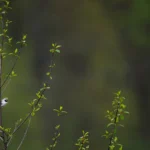Birds face many challenges — collisions with windows, pesticidas, y especies introducidas, to name only a few — but habitat loss and degradation stand out as the biggest threats by far. While birds are found in every major habitat type around the world, forests of all kinds, from tropical rainforests to temperate y boreal forests, support more than 75 percent of all bird species.
By some estimates, we lose as many as 25 million acres (10 million hectares) of forest annually around the globe (a little less than the area of the state of Virginia!) Forests are cleared to make way for agriculture and cattle grazing, unsustainably logged, and felled for development.
Sometimes the issue isn’t the lack of trees, but the quality of the remaining forest. The trees may lack the diversity of ages and species preferred and even required by some birds. Human intervention can interrupt naturally occurring periodic fires and floods, which can be beneficial for forests under some circumstances because they create dynamic habitats, with trees of different ages and species. To re-create the optimal conditions, forest managers sometimes have to do what most of us have been told not to do: cut down trees.
Harvesting timber as part of a sustainable forest management plan can improve habitat for birds and other wildlife. Bringing back habitat, specifically high-quality habitat, is our best hope for stabilizing bird populations and preventing extinctions. For more than three decades, American Bird Conservancy (ABC) has focused our efforts on restoring and improving habitat and expanding habitat connectivity. Working with dozens of partners, as of November 2025, ABC has supported the planting of 8,117,219 trees across 29,838.41 acres throughout the Western Hemisphere to help bring back habitat that has been lost. This work also supports a growing forestry program to manage habitats to maximize what they can do for year-round species and migratory birds alike.
ABC’s program staff are here to answer some of our most “treequently” asked questions. This story is not exhaustive, but it uses the relevant experiences of ABC’s program staff to provide a snapshot of their work in forested habitats from Michigan to Peru.















